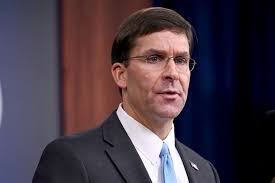Tehran, Iranian capital will host 70 renowned foreign companies during
a large international conference on grains, oilseeds and related industries on 2nd
and 3rd December 2019.
The event titled “Iran Grain Conference 2019” is the largest conference
ever held in Iran in the field of grains, Sharif Nezam-Mafi, the Board Chairman
of Iran-Switzerland Joint Chamber of Commerce which is organizing the
international gathering, said in a press conference.
Nezam-Mafi, who is the secretary of the event, said for the first time
in the country a conference on grains includes the complete chain of the
related products, technology, equipment, industries and all other related
issues. “It is a prominent feature of Iran Grain Conference.”
Referring to the high number of participants and sponsors of the event,
he said 450 applicants have registered to participate in the conference, of
them 70 applicants are from other countries including Russia, Germany,
Switzerland, Denmark, France, China, Turkey, Azerbaijan and Kazakhstan, and the
event is sponsored by 35 companies and associations.
He said the foreign participants are all renowned companies in the
international level and in fact they are all among the Ten Top companies of
their countries in the related fields.
Networking, major
objective of conference
Nezam-Mafi further said that the main objective and role of Iran Grain
Conference is “Networking” and in fact it tries to create a proper ground for
the Iranian companies to find their foreign partners.
Many of foreign companies think that Iran is an importer of the
consumer products, he said, adding, “We intend to let them know that Iran is a
major producer in many fields.”
Many specialized panels
Elsewhere in his remarks, Nezam-Mafi referred to holding many
specialized panels in various fields on the sidelines of the conference as
another prominent feature of the international event and mentioned “Trade” as
the subject of the first panel which will discuss international banking during
the sanctions.
The panels mainly cover issues related to the future needs and
limitations, for example those related to the climate change, and will discuss
the possible resolutions, he informed.
He also named some of the main speakers of the event as Yazdan Seif,
Iran’s deputy agriculture minister and CEO of Government Trading Corporation of
Iran (GTC), Masoud Khansari, the head of Tehran Chamber of Commerce,
Industries, Mines and Agriculture (TCCIMA), Ferial Mostofi, a board member of
Iran Chamber of Commerce, Industries, Mines and Agriculture (ICCIMA), and
Markus Leitner, the Swiss ambassador to Tehran.
To build a linking bridge
During the same press conference, Hossein Ziaian, one of the Board
member of Iran Grain Conference, referred to the status of Iran in the grain
market and said that given its potential the country should elevate its status
in this field.
“Through inviting private sector and foreign companies we wanted to
create a linking bridge through this conference in a way that Iran can promote
its status especially during the current condition”, he underlined.
Creating a linking bridge between Iranian companies and foreign ones especially
during the sanctions time is in fact a main objective of this international
gathering, he noted.
Ziaian further said, “We are planning to hold provincial and regional
conferences continuously after holding Iran Grain for further promotion of the
country’s status in the field of grains.”
To expand export market
Hossein Yazdjerdi, another Board member of the Conference, who was also
present in the press conference, said that Iraq, Afghanistan and North African
countries are some major importers of flour in the region and Iran can benefit
from this opportunity to expand its export market, adding that Iran Grain
Conference is a platform to help the country promote its export status.
The organizers have made many efforts to make this conference as
attractive as possible to address many important attendees, he underscored.
Yazdjerdi further elaborated on the status of wheat cultivating in Iran
and said, “The good news is that we have achieved self-reliance in production
of wheat, but in terms of the quality of this grain we should still try to
promote it, as just 40 percent of our produced wheat is of high quality.”
To highlight Iran’s presence
Later in the press conference, Seyed Mohammadreza Mortazavi, the Board
Chairman of Federation of Iranian Food Associations and also a Board Member
of Iran Grain 2019, mentioned creating stable and effective ties as the major
aim of holding this international event and expressed hope that it can
highlight Iran’s presence in the global market.
“It is true that we are an importer of many grains, but Iran has a high
potential for processing these products”, he further said.
“We have problems in cultivation, import and export of grains, but we
hope to find the ways for stable supply of our required grains”, he added.
“There is a 10-year outlook for grain supply, but if the market is not
managed properly, we will face serious problems”, the official commented,
adding, “We should benefit from our geopolitical status to prevent such
problems.”
Such conference missing in Iran
Kaveh Zargaran, Secretary General of Federation of Iranian Food
Associations, who is also a board member of Iran Grain 2019, said, “For many
years, we have been seeing that the neighboring countries which hold shares
very lower than Iran’s share in the grain market, are holding such conferences,
but it was missing in our country.”
Now, it is hoped that Iran Grain Conference can highlight the country’s
role and status in the grain market, he mentioned in the same press conference.















